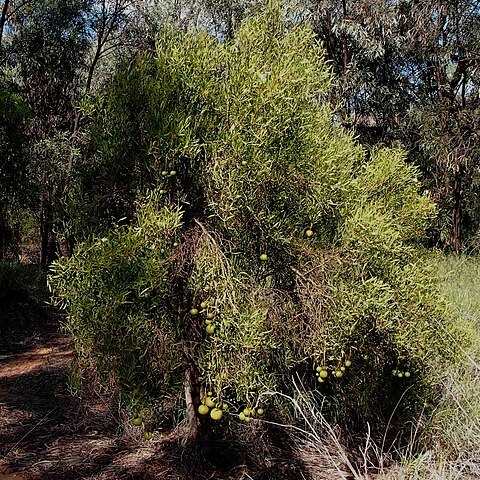A tall shrub. The bark is dark grey and deeply cracked. The stems are thorny. The leaves are 2-4 cm long by 0.8-1.5 cm wide. They are sword shaped and thick and leathery. They are dark green. The flowers are in clusters of 1-5 at the ends of branches. The flowers are 2.5 cm across. They are white. They have many spreading stamens. The fruit is a berry with is 2-4 cm across. It is yellowish and mostly smooth.


